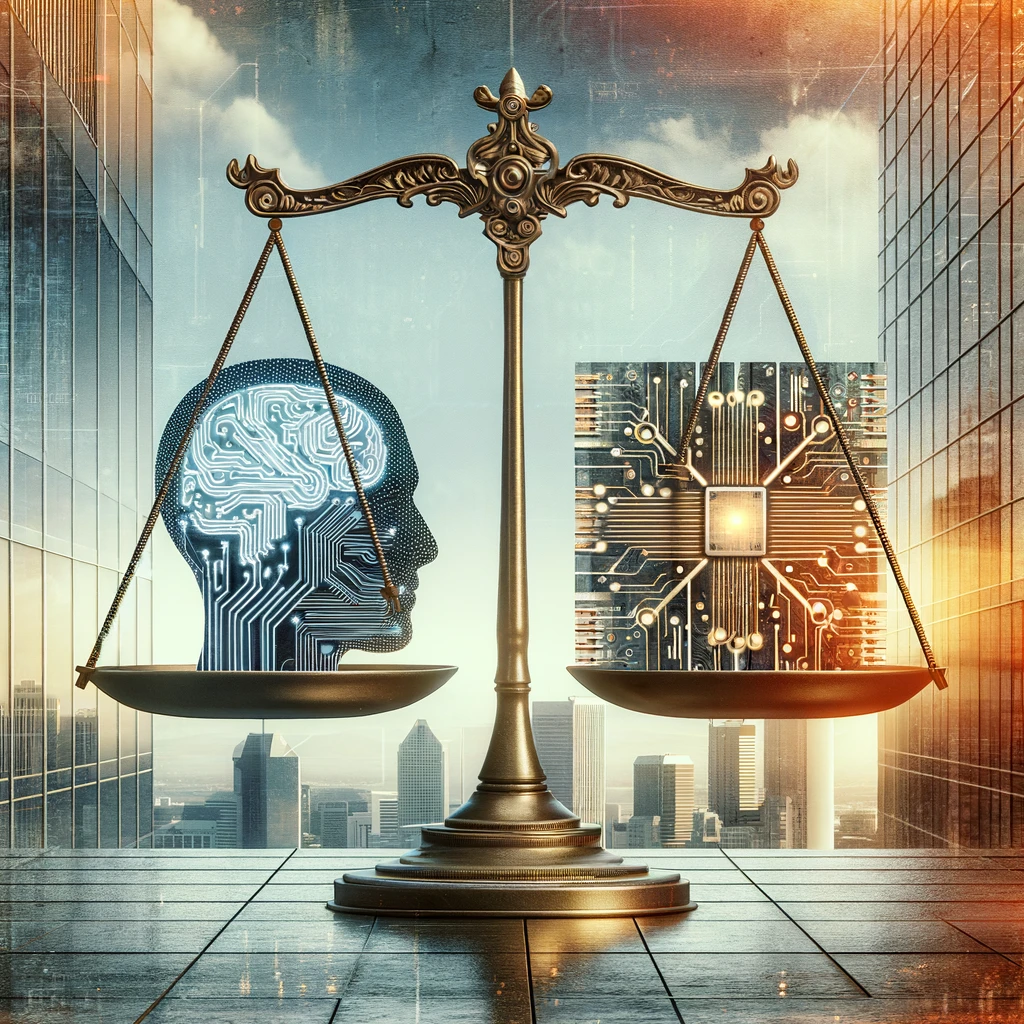Navigating the Potentials and Challenges of AI-Enhanced Management
The debate on AI in leadership highlights its potential to enhance decision-making, efficiency, and innovation, alongside concerns about emotional intelligence, AI hallucinations, and ethical complexities. While AI can offer unbiased analysis and automate tasks, it lacks the emotional depth and ethical judgment of human leaders. The challenges presented by AI, such as generating false information, necessitate improvements in AI technology and ethical governance. The consensus suggests a balanced approach, where AI supports rather than replaces human leadership, is optimal. This strategy leverages AI’s strengths and human qualities, aiming for a future where technology and humanity coexist for organizational growth and innovation.
AI in Leadership: Navigating the Potential and Pitfalls
In the rapidly evolving landscape of artificial intelligence (AI), businesses and organizations worldwide are exploring the potential of AI in leadership roles. This exploration raises profound questions about the efficacy, ethics, and future of human-AI collaboration in management. As AI technologies grow increasingly sophisticated, the debate intensifies around their potential to replace human leaders. Here, we delve into three primary arguments for and against the AI-driven leadership paradigm, critically analyzing each point’s merits and drawbacks, and touching on the phenomenon of AI hallucinations as a notable consideration.
The Case for AI in Leadership
1. Unbiased Decision-Making
For: AI systems can process vast amounts of data impartially, potentially eliminating human biases that often skew decision-making in leadership. This objectivity can lead to more equitable and efficient outcomes, especially in HR and resource allocation.
Against: AI’s “unbiased” nature is a misnomer, as these systems are only as impartial as the data and programming they receive. If the input data is biased, AI can perpetuate or even exacerbate these biases, leading to decisions that may not truly be fair or objective.
2. Enhanced Efficiency and Productivity
For: AI can automate routine and complex decision-making processes, streamlining operations and increasing productivity. This capability allows human leaders to focus on strategic thinking and creative problem-solving, areas where AI currently falls short.
Against: While AI can improve operational efficiency, it lacks the human touch essential for inspiring and motivating employees. Leadership involves emotional intelligence and empathy, qualities that AI cannot replicate, potentially leading to a disengaged and demotivated workforce.
3. Scalability and Innovation
For: AI systems can analyze trends and patterns at a scale unattainable for human leaders, potentially unlocking new opportunities for innovation and growth. This capability can drive organizations to adapt and evolve rapidly in a competitive landscape.
Against: Relying on AI for innovation might lead to a homogenization of ideas, as AI-driven strategies often converge on statistically successful outcomes. This approach can stifle truly creative and out-of-the-box thinking, essential for breakthrough innovations.
The Case Against AI in Leadership
1. AI Hallucinations and Misinformation
For: Critics argue that AI’s susceptibility to generating hallucinations—false or misleading information—presents a significant risk. Such inaccuracies in decision-making could lead to costly mistakes and strategic missteps.
Against: While AI hallucinations are a concern, ongoing advancements in AI research aim to mitigate these issues. Moreover, human leaders are not immune to making decisions based on misinformation or cognitive biases. The key is in developing robust AI systems that can identify and correct hallucinations more efficiently than humans can address their biases.
2. Loss of Human Connection
For: Leadership is inherently a human endeavor, centered around relationships, trust, and empathy. AI’s inability to genuinely connect with employees could erode organizational culture and morale, leading to a less cohesive and committed workforce.
Against: AI could complement, rather than replace, the human aspects of leadership. By handling administrative and analytical tasks, AI can free up human leaders to focus more on interpersonal relationships and team building, potentially enhancing the human connection within organizations.
3. Ethical and Accountability Issues
For: Entrusting AI with leadership roles raises complex ethical questions and accountability issues. When AI makes a controversial decision or error, determining responsibility becomes challenging, complicating legal and moral frameworks.
Against: This challenge presents an opportunity to establish new ethical guidelines and accountability mechanisms for AI-driven decisions. Rather than shying away from these issues, businesses can lead the way in defining responsible AI use, setting a precedent for future technological integration.
Conclusion
The debate over AI in leadership roles encompasses a wide range of potential benefits and challenges. While AI offers unparalleled efficiencies and capabilities, its limitations, particularly in emotional intelligence and ethical decision-making, underscore the indispensable value of human leaders. The phenomenon of AI hallucinations further highlights the need for cautious and critical integration of AI into leadership roles. A balanced approach, where AI supplements rather than supplants human leadership, appears to be the most pragmatic path forward. This synergy can harness the strengths of both AI and human capabilities, steering organizations towards a future where technology and humanity collaborate for greater innovation and prosperity.
The future of AI in leadership is not a zero-sum game where the rise of intelligent systems necessitates the obsolescence of human intuition and empathy. Instead, it’s a dynamic landscape where the augmentation of human capabilities with AI can lead to unprecedented levels of efficiency, innovation, and inclusivity in decision-making processes.
The ongoing development and refinement of AI technologies, particularly in addressing AI hallucinations and improving ethical decision-making frameworks, are critical. As AI becomes more sophisticated, its integration into leadership roles should be accompanied by a parallel evolution in governance frameworks, ethical guidelines, and transparency mechanisms. These measures will not only mitigate risks but also enhance trust in AI as a partner in leadership.
Moreover, the future of AI in leadership depends on fostering a culture of lifelong learning and adaptability among human leaders and employees alike. As AI takes on more analytical and administrative tasks, human leaders will need to focus increasingly on areas where they excel uniquely—creative problem-solving, emotional intelligence, and ethical leadership. This shift necessitates an investment in developing these skills across the workforce.
Collaboration between AI and human leaders also offers an opportunity to address longstanding biases and inequalities in leadership. By leveraging AI’s data-processing capabilities to identify and mitigate unconscious biases, organizations can make strides toward more diverse and inclusive leadership. However, this requires a critical approach to data and algorithmic fairness, ensuring that AI systems themselves do not become sources of bias.
In conclusion, the integration of AI into leadership roles represents a frontier full of potential and pitfalls. Navigating this landscape successfully requires a nuanced understanding of both the capabilities and limitations of AI, as well as a commitment to ethical principles and human-centered design. By doing so, organizations can harness the power of AI to complement and enhance human leadership, creating a future where technology and humanity work in concert to achieve common goals. This balanced approach, emphasizing collaboration over replacement, promises a new era of leadership marked by greater efficiency, inclusivity, and innovation.

